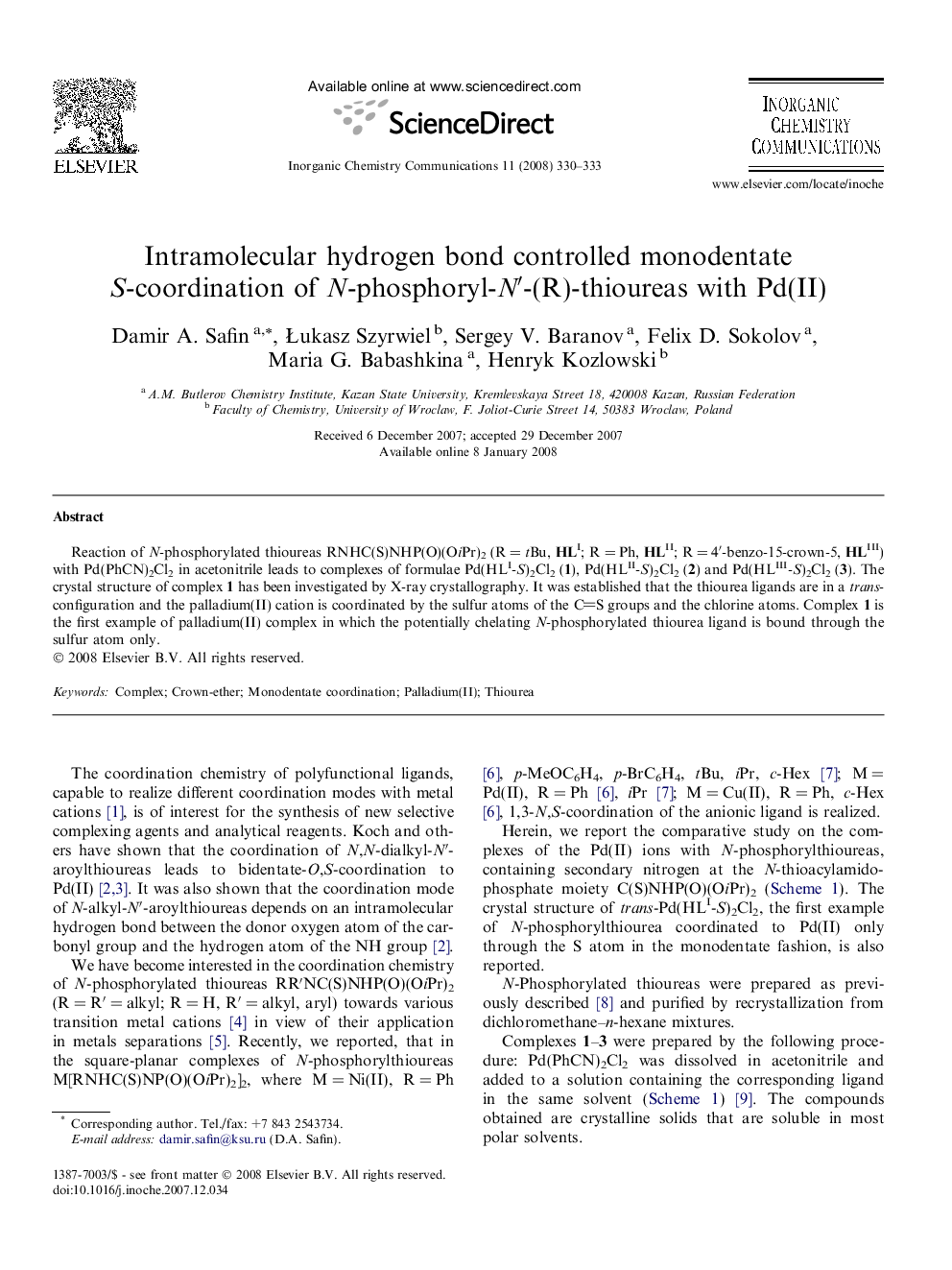| Article ID | Journal | Published Year | Pages | File Type |
|---|---|---|---|---|
| 1304691 | Inorganic Chemistry Communications | 2008 | 4 Pages |
Reaction of N-phosphorylated thioureas RNHC(S)NHP(O)(OiPr)2 (R = tBu, HLI; R = Ph, HLII; R = 4′-benzo-15-crown-5, HLIII) with Pd(PhCN)2Cl2 in acetonitrile leads to complexes of formulae Pd(HLI-S)2Cl2 (1), Pd(HLII-S)2Cl2 (2) and Pd(HLIII-S)2Cl2 (3). The crystal structure of complex 1 has been investigated by X-ray crystallography. It was established that the thiourea ligands are in a trans-configuration and the palladium(II) cation is coordinated by the sulfur atoms of the CS groups and the chlorine atoms. Complex 1 is the first example of palladium(II) complex in which the potentially chelating N-phosphorylated thiourea ligand is bound through the sulfur atom only.
Graphical abstractWe reported three new complexes of the Pd(II) cation with N-phosphorylated thioureas RNHC(S)NHP(O)(OiPr)2 (R = tBu, HLI; R = Ph, HLII; R = 4′-benzo-15-crown-5, HLIII). Structures of the obtained compounds were investigated by IR, 1H and 31P{1H} NMR spectroscopy and elemental analysis. The crystal structure of complex trans-Pd(HLI-S)2Cl2 has been investigated by X-ray crystallography. It was established that the thiourea ligands are in a trans-configuration and the palladium(II) cation is coordinated by the sulfur atoms of the CS groups and the chlorine atoms. Complexes trans-Pd(HLI–III-S)2Cl2 is the first example of palladium(II) complex in which the potentially chelating N-phosphorylated thiourea ligand is bound through the sulfur atom only.Figure optionsDownload full-size imageDownload as PowerPoint slide
